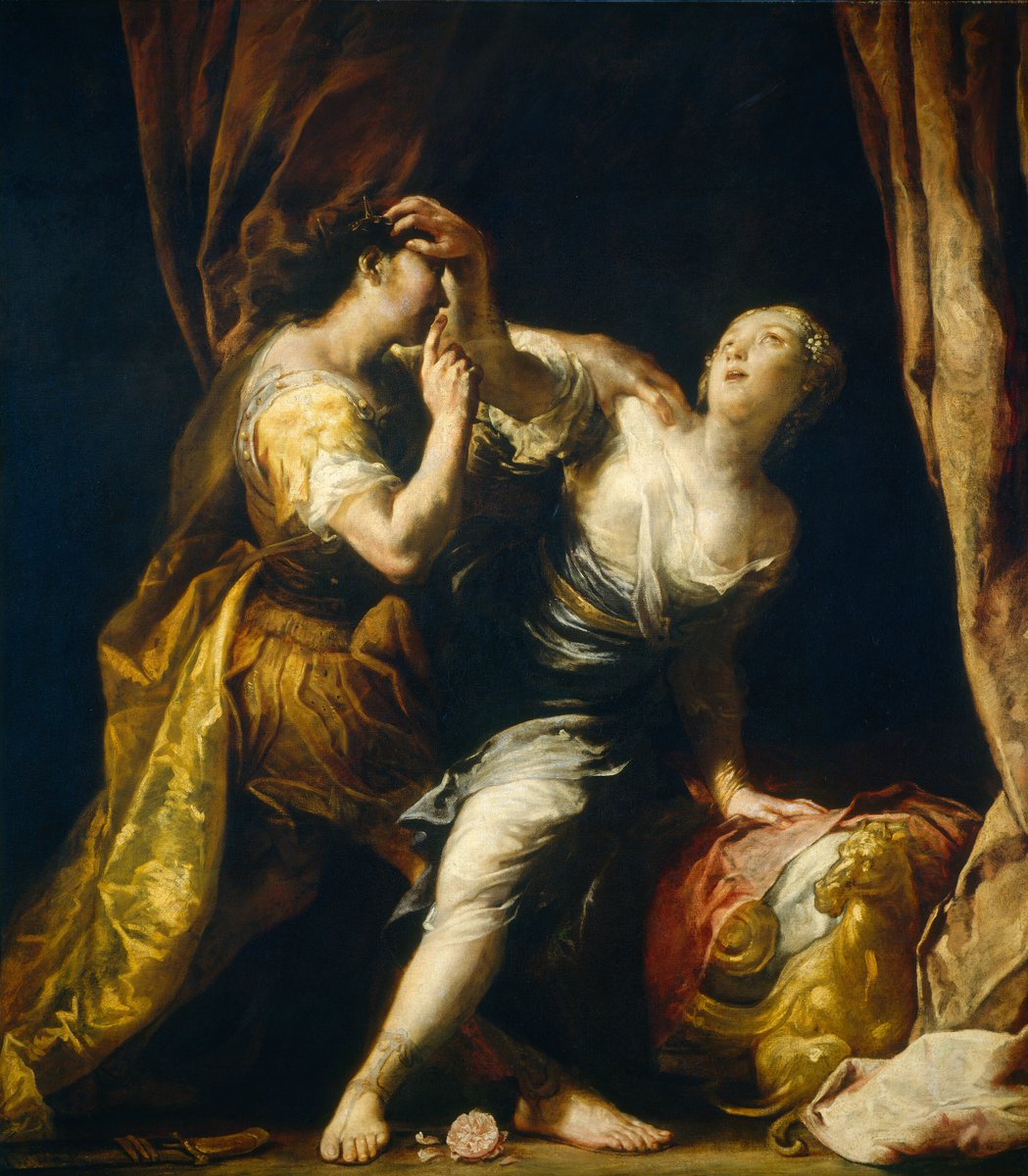

In both stories, Lucretia's rape and her subsequent suicide set off a train of revolutionary events: Brutus seizes the bloody knife from Lucretia's twice-violated body and, holding it to his lips, vows with his fellow Romans never to suffer Tarquin “nor any other king to reign in Rome.” In Lee's drama, just as in Livy's history, the chaste and honorable Roman matron Lucretia is raped by “the lustful bloody Sextus,” a prince of the proud and tyrannical house of Tarquin. Yet the central theme of Lee's play is, of course, the association between tyranny and rape: it is the tyrant's violation of woman (not of religion) that justifies resistance. Many modern commentators have specifically noted the anti-Catholic overtones of Lee's drama and have read it within the context of the Popish Plot scare. Like other Exclusion publications, Brutus offered a powerful argument against tyranny and arbitrary government, and the play was evidently construed as an attack on the Stuart monarchy. This theatrical production was by all accounts a success, yet the play was banned from the stage after only six days the order of the Lord Chamberlain stated objections to its “very Scandalous Expressions & Reflections upon ye Government.” Lee's Brutus was, however, soon available in print, published by Richard and Jacob Tonson in June of 1681. Lee's play recounted the tale of the rape of Lucretia and the subsequent actions taken by Brutus in resistance to this act of tyranny. Early in December 1680, Nathaniel Lee's Lucius Junius Brutus was performed by the Duke's Company in the Dorset Garden Theater. William Shakespeare1tells the story of what happened in his epic poem The Rape of Lucrece:ĭuring the Exclusion crisis, the figure of a tyrant rapist, a ruler undone by his own lust and cruelty, briefly appeared on the London stage. That night after dinner, he entered Lucretia's bed chamber armed with a knife. Several days later, Tarquin took a male slave as an attendant and went to Lucretia's home without Collatinus' knowledge.Īs his kinsman, Tarquin was courteously received as a guest. On seeing her, Sextus Tarquinius, son of the Etruscan king of Rome, was seized with desire for her, not only with her beauty, but also for her chastity. Yet Lucretia, although it was late at night, was busily spinning her wool in the lamplight in the hall of their home she was declared most virtuous. Arriving in Rome at dusk, the others found their wives whiling away the time at a luxurious banquet and engaging in other pleasures. When the subject of their wives came up, every man enthusiastically praised his own, and as their rivalry grew, Collatinus proposed that they mount horses and see the disposition of the wives for themselves, believing that the best test is what meets his eyes when a woman's husband enters unexpectedly. There are several known versions of the composition, dateable from the late 1630s.Lucretia was a legendary heroine of ancient Rome, the quintessence of virtue, the beautiful wife of the nobleman Lucius Tarquinius Collatinus.2In a lull in the war at Ardea in 509 BCE, the young noblemen passed their idle time together at dinners and in drinking bouts. The painting is a close, reduced replica of a much larger canvas by Ficherelli in the Accademia di San Luca, Rome. Fichrelli invests the scene with an atmosphere of claustrophobic intimacy. In this work he represented the dramatic moment of confrontation between Lucretia and Sextus Tarquinius, the latter raising his sword while his servant observes in the background. Ficherelli favoured violent scenes infused with an aura of morbid sensuality. The incident hastened the revolt which led to the overthrow of monarchical tyranny and the establishment of the Roman Republic. The next day, Lucretia committed suicide before her father and husband in order to reclaim her honour. While sleeping, Sextus Tarquinius, son of the tyrannical King Tarquinius Superbus, came into her chamber and threatened to disgrace and kill her if she did not lie with him. Lucretia was the wife of the Roman nobleman Collatinus during the 6th century BC.

The tragic story of Lucretia, recounted by Livy, was a popular subject with baroque artists.


 0 kommentar(er)
0 kommentar(er)
